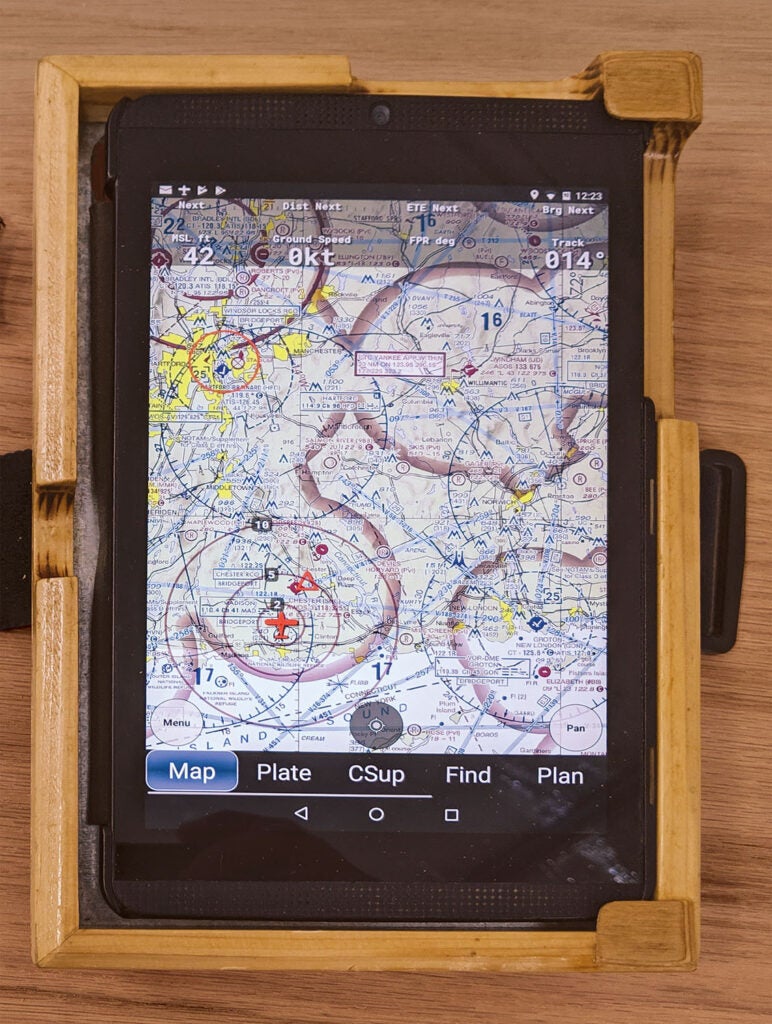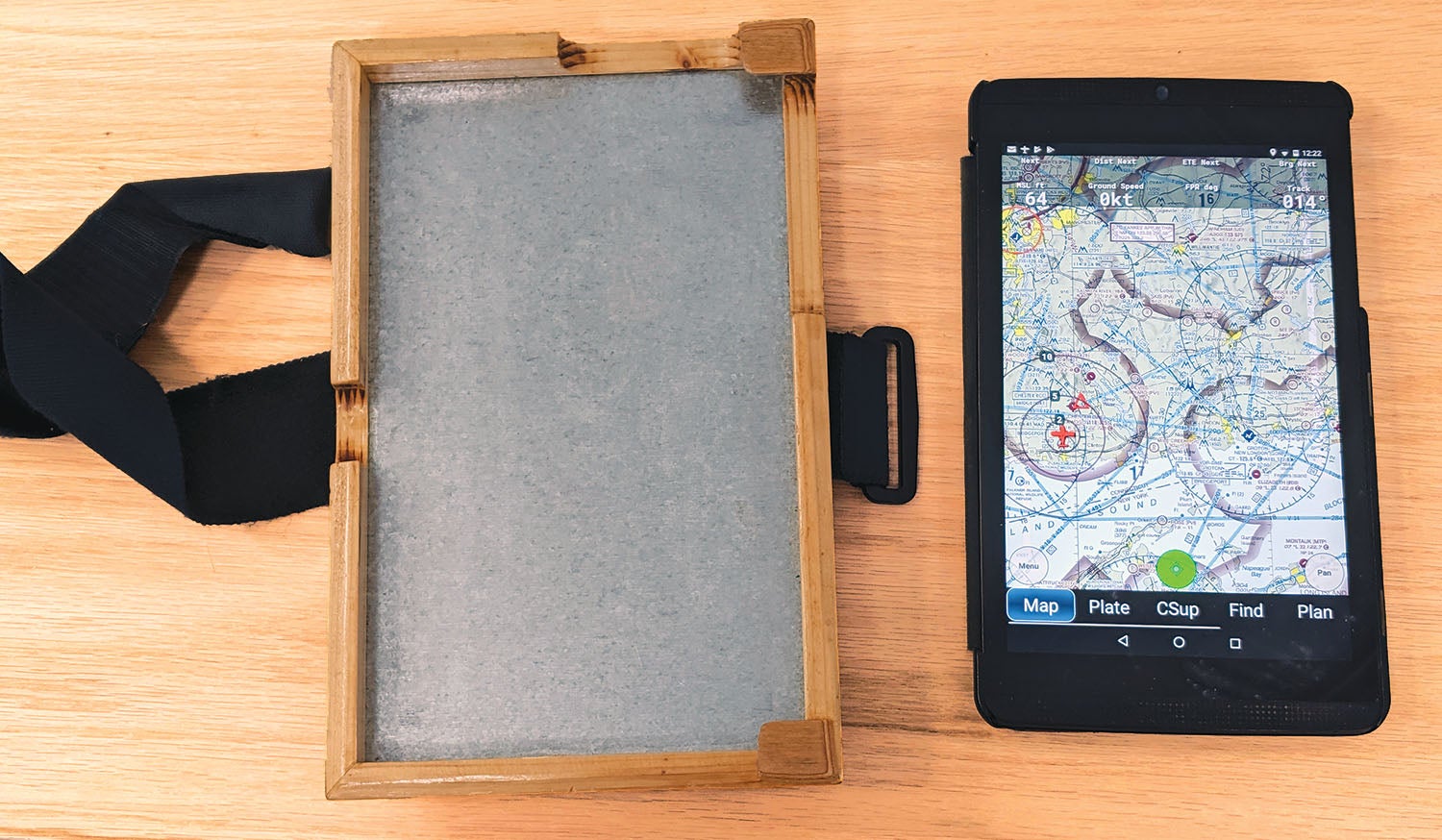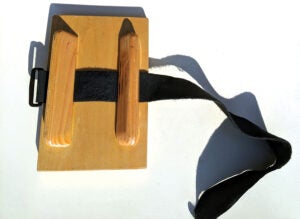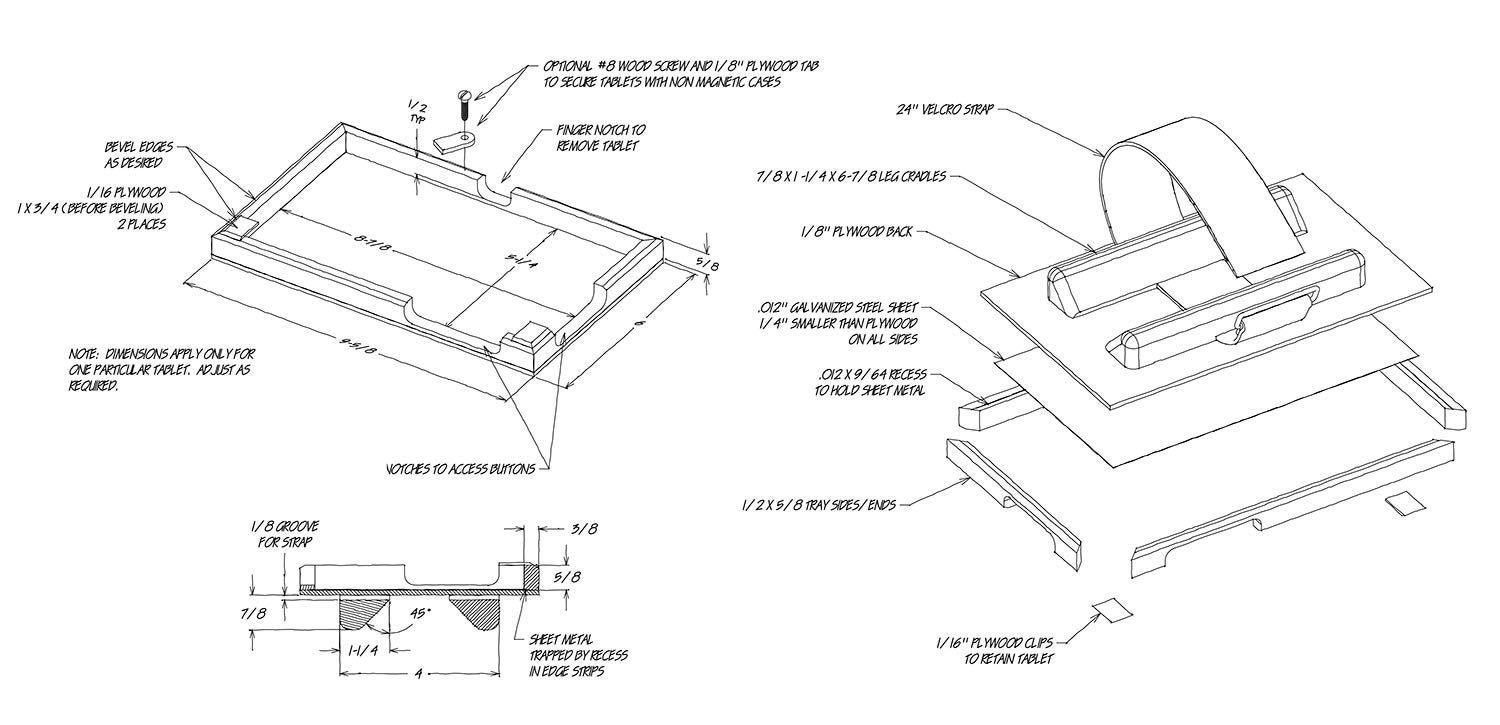
While I owned my Fisher FP-404 (“Restoring a Stored Homebuilt,” February 2017), I was using an Android smartphone running the free Avare navigation app for what limited cross-country flying I did with that plane. As it was a wooden plane, a homemade wooden holder for the smartphone seemed more in keeping with the wood structure than the commercially available holders, which were usually black plastic. This worked well, but when I bought a Starduster in another state and needed to fly it nearly 1000 miles to get it home (“Biplane Cross-Country,” May 2018), I wanted something with a larger screen, and the 8-inch Nvidia Shield tablet I already had would be perfect. I didn’t want to permanently mount it, as modern electronics look out of place in an open-cockpit biplane. I also needed something portable I could bring with me, so attaching it to a kneeboard looked like the way to go. I didn’t find any commercial kneeboards I liked, so I decided to make my own, again choosing wood as an easy-to-work-with material.
The tablet’s protective case had a magnetic cover, which held it closed as well as turning it on and off. Earlier, I had noticed that the magnets in the cover were fairly strong, sufficient to even hold the tablet on a vertical metal surface like a refrigerator. With that, putting a thin steel sheet in the kneeboard would hold the tablet in place, so I wouldn’t need the elastic straps or other techniques used by the purchased kneeboards. Before proceeding, I sat in the cockpit with the tablet and made sure that the cover’s magnetic field didn’t affect the compass—it didn’t, unless the tablet was much closer to the compass than it would ever be in use.

The sketches are pretty self-explanatory. The dimensions shown fit my tablet and will need to be adjusted for any other tablet, and you may want to adjust the position of the cradles on the back to comfortably fit your own leg. The notches on the top and right sides allow access to the buttons and USB power cable, while the notch on the left side makes it easier to remove the tablet from the kneeboard. The magnetic cover sticks to the sheet metal back and holds the hinge side down just fine, but it needs tabs to keep the free side from lifting. If you don’t have a suitable magnetic cover or don’t want to use it that way, you can eliminate the sheet metal and make a simple turn latch as shown.

The plywood I had left over from other projects, but it can be found at any aircraft supply house or local model airplane shop. The other wood parts I ripped out of a spruce 2×4, but any kind of wood can be used, even fancy exotic hardwood if you want to get crazy. I ordered the metal back (.012-inch galvanized steel) from McMaster-Carr (p/n 8943K11); the 2×24-inch Velcro strap I already had, but it’s similar to McMaster p/n 3955T286. Everything was glued together with Titebond II, but again, you can use any kind of glue you prefer. I finished it with several coats of clear shellac.
The kneeboard has served me well for the last few years. The tablet has never come loose unintentionally, even in turbulence, but can be easily removed when desired.














